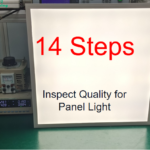Product quality inspection reports are very important for quality inspection.
They can provide critical information for many decisions during supply chain management.
Especially, both buyers and manufacturers rely on pre-shipment inspection reports to determine various subjects.
However, you may not know that inspection reports have limits of their own.
- Just like one theory cannot explain all phenomena.
- It is better to know both the advantages and disadvantages of inspection reports.
It is normal that you receive a quality inspection report but it brings you many questions.
And there are also still many details that are not included or not well explained.
If you have these doubts, it’s not your fault – not because you are unprofessional, or dumb.
- But because quality inspection reports have limits of their own.
Below, we will tell you 7 things that quality inspection reports can’t tell you.
And you should be aware of them to make better decisions.
1. Are the quality inspection reports customized to better fit your products?
There are plenty of products available from various manufacturers.
And products in the same industry can have very different features, functions, and specifications.
Even products of the same type can have different standards based on their applications.
For example, LED lights working with a lower voltage DC 12V have different standards from those with a higher voltage AC 220V.
People with intensive experience in one industry may not know another industry at all.
Inspections are performed by people, and therefore will be limited by the people.
When it comes to quality inspection reports, probably you need to be clear about one thing.
Is the report that is designed to be universally applied to almost all products?
You need to be clear about this with your inspection company.
Particularly, if your inspection company offers services in a wide range of industries.
Better to check whether they can provide a report designed for your products.
And even better to work with a third-party quality inspection company that focuses on your industry.
We know this because we had a similar story.
When BackMorning started quality inspection service, we used report templates for general purposes.
Before long, we realized that they were not good for many reasons.
Therefore, we kept optimizing them to make them the best fit for the LED lighting industry.
If you are not sure, you can take a look at our sample reports.
2. The overall quality of a manufacturer can provide
For sure, inspection reports are important indicators of product quality.
However, they can’t tell you the consistent quality level of different products by a manufacturer.
Many important factors contributing to the final quality of products are not included.
Those factors are mostly indirect to products.
Typical examples are internal quality inspections, instruments, test methods, etc.
They are the foundations for assuring good product quality consistently in the long term.
If quality is one of your most important competitive strategies, pre-production inspection, and production audits are also important for choosing the right manufacturers.
They will better reveal the overall quality level of a manufacturer in the long term.
This is a more reliable indicator than inspection reports for product quality.
3. Who should be responsible and to what extent?
Quality inspection reports can tell you what the quality of your products is.
But they can’t tell you why it is like this, and how it should be.
Generally speaking, the purpose of quality inspection reports is a list of fact checks.
For example, the tested values of products’ critical parameters.
So, you can compare rated values and tested values to see whether they are the same as required.
Sometimes, you may see a test result is quite different from the required one.
Usually, the inspection report won’t tell you why this test has a different result.
What makes the result different?
Is it the fault of the manufacturer, or the designer?
Shall we correct this difference, and how to do that?
These questions all require knowledge, skills, and experience.
As a common practice, it is not possible for the inspection company to offer answers and solutions.
Unless they specialize in your industry and can be called an expert in this field.
4. Quality inspection reports can’t determine Go or No Go?
As mentioned above, quality inspection reports are to collect facts about the products.
However, the reports themselves cannot make decisions directly for you.
It is not the responsibility of the reports or inspection companies to decide whether to let go or not to let go.
Typically, inspection reports will indicate results with PASS, FAIL, or PENDING.
Alternatively, they may give you some specific numbers regarding test results.
Needless to say, those results are very important for making decisions.
However, they can’t replace the decisions that are in your hands.
Even if an inspection report contains certain results marked with FAIL, it doesn’t mean you can’t ship the products out.
We have one example to explain, which is in the LED lighting industry.
The quality of light is a combination of multiple parameters.
Sometimes, a type of LED lights has a bigger value regarding one parameter compared to the standard.
Our quality inspector will mark this tested result as FAIL on pre-shipment reports for this parameter.
However, the customer can still decide to ship these lights.
This is because this parameter has limited practical influence on its application in life.
The decision is in the hand of the purchaser to decide whether to ship or not.
Therefore, remember to use quality inspection reports to help you understand the facts.
But not expect them to decide for you.
5. Product performance in the long term
Some products should be durable for a certain period of time.
The users have to judge their quality after the products work for months or even years.
Technically, it is very difficult or even impossible to run tests for such a long time.
For this reason, we have to use some scientific methods to estimate the life span of products.
Rather than obtaining real performance by keeping the product working for a long time.
For sure, this is definitely helpful for determining the quality of products.
However, it can never replace the real performance of the products.
Let us give you an example in the LED lighting industry to help you understand.
It is about the waterproof capability of LED streetlights.
We can do waterproof IP rating tests to simulate during pre-shipment inspections.
However, passing this test doesn’t guarantee they will still be waterproof after 6 months or even 1 year.
This is because the materials of the streetlights will degrade as time goes by.
Obviously, not possible to keep the streetlights working for 6 months and then decide whether to ship them.
Therefore, we have to admit that quality inspection reports can’t guarantee quality in the long term.
Usually, they only indicate the products are up to preset requirements and conditions.
6. Quality inspection reports can’t give you a whole picture
Probably, you may think every piece of your products will be checked during inspections.
However, this is not possible, not because inspection companies are lazy.
Think about how many workers are on the assembly lines just for packing products.
It’s normal to take several workers to put user manuals, poly bags and seal the sales boxes, etc.
It is not possible for inspection companies to reopen all the products and put them back again.
Therefore, it’s a common practice to take some random samples from the shipment for inspections.
And the number of samples will depend on specific standards or ratios.
Checking all products before shipment is possible in some special cases:
The quantities of your products are comparatively small
The unit value of your products is so high that worth inspecting each one
Otherwise, the common practice is to take a certain number of random samples.
If for BackMorning, the number of samples to pick for pre-shipment inspections is based on the common standard AQL II.
So, what is Acceptable Quality Level (AQL)?
According to Investopedia’s explanation:
“ The acceptable quality level (AQL) is a measure applied to products and defined in ISO 2859-1 as the “quality level that is the worst tolerable.”
The AQL tells you how many defective components are considered acceptable during random sampling quality inspections. It is usually expressed as a percentage or ratio of the number of defects compared to the total quantity.”
That means the results of inspections are still for certain percentages of your products.
Not for every piece of your products.
Even inspections are done according to an internationally recognized method.
For this reason, inspection reports can only help you get closer to the whole picture.
7. Can’t tell how to do the right things in the right way
If you have read some quality inspection reports, you already know what information is included.
They can give you an overview of your products to be shipped.
And also give you many details about defects regarding your products.
If your inspection company offers excellent services, they can even include pictures and videos.
However, generally speaking, it is not possible for them to point out why your product has a defect.
What are the possible causes – wrong manufacturing techniques, or improper material storage?
What does that mean for the users – lights will go out, or incorrect color temperatures?
And what to do to correct these defects – train the frontline worker, or change material suppliers?
That doesn’t mean an inspection company is not good.
But each company in one industry focuses on specific subjects.
And of course, they will have their limits.
If you prefer better quality in the long run, consider working with an inspection company that focuses on your products.
There are third-party quality inspection companies specialized in specific industries.
Take BackMorning for example, we focus on the LED lighting industry.
We can point out the causes, and suggest correcting solutions to help you improve product quality.
Final Thoughts
Needless to say, quality inspection reports will surely help you understand critical facts about your products.
However, it is equally important to understand their limits.
This post has explained 7 things that quality inspection reports can’t tell you.
It’s important to pick the right inspection company to work with.
And also stay in good communication with both your manufacturer and inspection company.
So, you can work together to make your products better and better.
If you happen to work in the LED lighting industry, you can take a look at BackMorning’s inspection report samples.
Feel free to contact us if you may need our help.
Thanks for reading!
Related posts:
 Quality Inspection Example of a Portable Power Bank
Quality Inspection Example of a Portable Power Bank
 Quality Management Systems and Certifications Don’t Always Guarantee Defectless Products
Quality Management Systems and Certifications Don’t Always Guarantee Defectless Products
 7 Tips for Finding Reliable Manufacturers in China
7 Tips for Finding Reliable Manufacturers in China
 10 Steps to Inspect LED Tube Battens before Shipment
10 Steps to Inspect LED Tube Battens before Shipment
 14 Steps to Inspect LED Panel Lights before Shipment
14 Steps to Inspect LED Panel Lights before Shipment
 12 Steps to Inspect LED Linear Lights before Shipment
12 Steps to Inspect LED Linear Lights before Shipment



